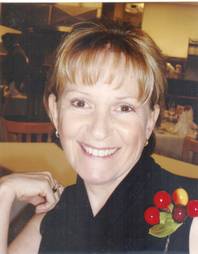Tuesday, Nov. 25, 2008 | midnight

Stefani Evans
How did a rural Georgia boy marry a nice girl from northern Minnesota?
When we question how people of dissimilar backgrounds and nativity meet, we discover facts about our ancestors. If we probe deeper, we learn about the times in which they lived.
My father-in-law was born in 1927 in the same rural Georgia county in which his ancestors settled a century before, when the county opened in 1828. My mother-in-law grew up in Crookston, Minn., not far from her grandfather's Polk County homestead. Her Swedish and Danish ancestors had farmed in Minnesota since the latter part of the 19th century. How they met is a 20th century story of wartime migration to the American West.
The U.S. Employment Service Office of the War Manpower Commission placed ads in most city newspapers similar to one that ran in the Sheboygan Press (Sheboygan, Wis.), Aug. 18, 1944. They implored men and women not otherwise engaged in essential war work to "Help build the B-29 SUPER-FORTRESS, The Big New Boeing Bomber," promised "Free transportation to the West Coast [or Seattle]," and concluded, "HELP BUILD FOR VICTORY!"
Bill Evans worked steadily as a school teacher, but the rural Georgia native couldn't spend the scrip he earned. He took other jobs to provide for his wife and two sons, but his pay was poor. In June 1944 the Evans family of four and their dog, Frisky, rode their 1939 Ford across the continent to Renton, Wash., where Evans had secured war work as an efficiency expert at the Boeing Co. Bill and Margaret Evans, their boys, and their dog made home in their government-issued Renton Highlands duplex.
In 1943 George Nels Anderson was recovering from his second heart attack. Work was scarce in Minnesota for a young man who couldn't labor; he needed work to feed his wife and two daughters. George and his wife, Hilma, found jobs at Boeing, and in June 1944 the Anderson family boarded the Great Northern train at Grand Forks, N.D., to embark on their new life in Washington. Boeing employees met their train and escorted them to their Renton Highlands duplex across the street from the Evans family. On the fourth of July 1944, my husband's future parents met for the first time at the water truck on the corner.
Carl Abbott, in The Metropolitan Frontier: Cities in the Modern American West (1993), writes that most World War II defense dollars were spent in major cities in the western part of the country. The government supplied Renton Highlands duplexes to Boeing workers. Seattle, Everett and Renton boomed during World War II as their Boeing factories "rolled out thousands of B-17s and B-29s." Likewise, the Puget Sound Navy Shipyard was one of the area shipyards to churn out "destroyers, patrol boats, and minesweepers." Abbott notes that Boeing and the Naval Shipyard were already part of the Seattle area's industrial base. Existing plants efficiently fulfilled the increased production and workforce demands of the war machine, and the Seattle area reaped large profits and sustained massive growth through war production.
Discovering how the rural Georgia boy met the northern Minnesota girl leads us to 1944 Renton, the World War II worker migration to the West Coast and Seattle's wartime defense boom. George Nels Anderson did not survive his third and final heart attack in December 1944. He never knew that in 1947 his daughter would marry her first love, the cute boy she met at the corner water truck in Renton Highlands.
Stefani Evans is a board-certified genealogist and a volunteer at the Regional Family History Center. She can be reached c/o the Home News, 2360 Corporate Circle, Third Floor, Henderson, NV 89074, or [email protected].

Join the Discussion:
Check this out for a full explanation of our conversion to the LiveFyre commenting system and instructions on how to sign up for an account.
Full comments policy